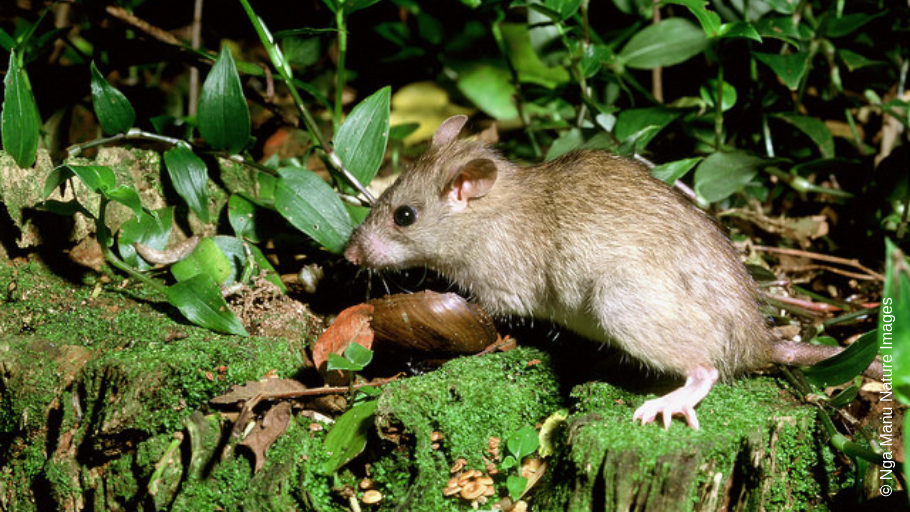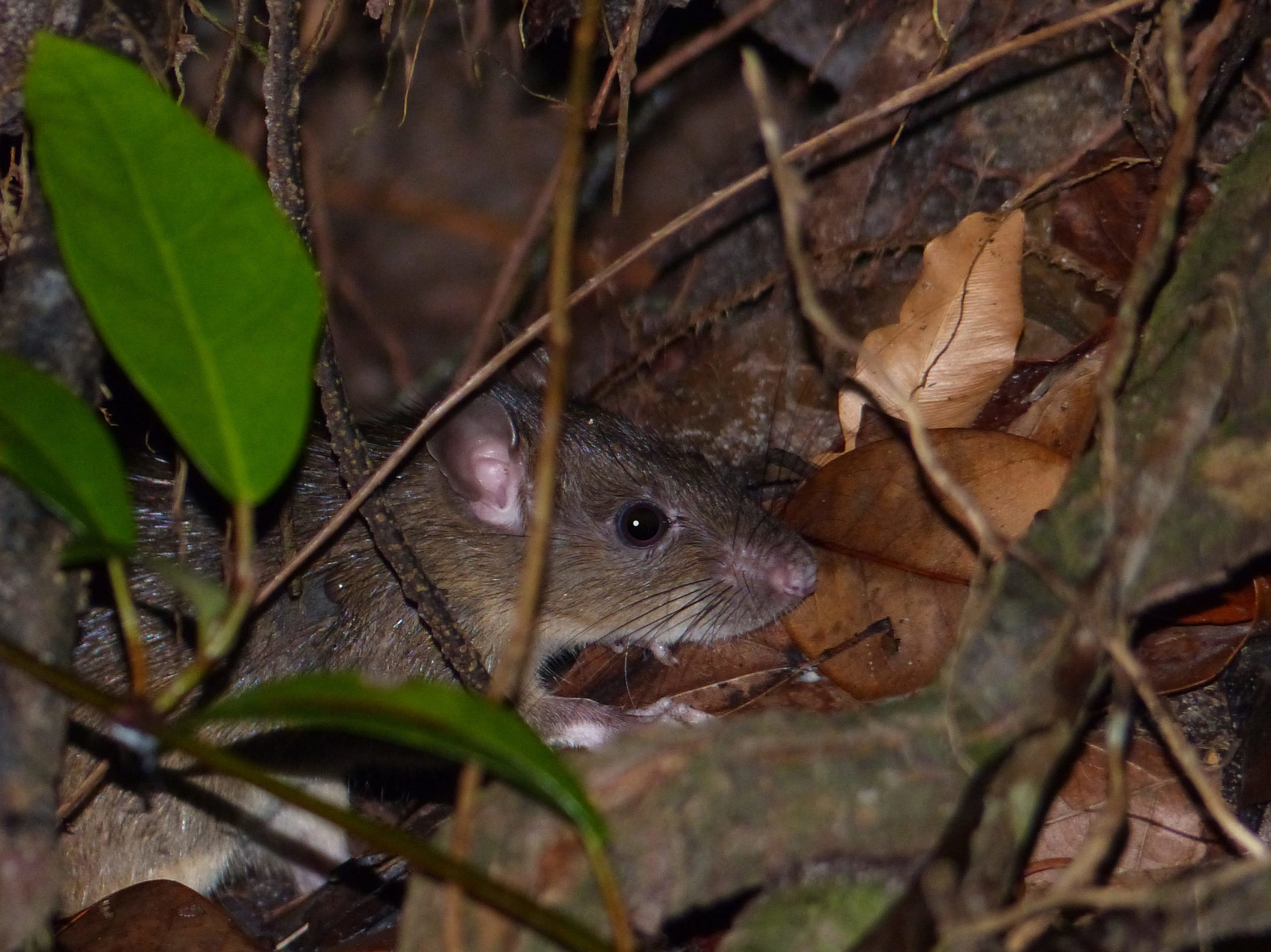Trappers from the Kepler Challenge Trust helped out by supplying 248 trapped ship rats back in 2009-2010, so that researchers Kay Clapperton, Fraser Maddigan, Warren Chinn and Elaine Murphy could carry out a detailed study of what the Fiordland ship rats had been eating before they died, the population structure of young and old rats and when they were breeding.

The study concluded that the diet of ship rats doesn’t appear to change significantly through a beech mast and the impact on native wildlife is mainly driven through the sheer increase in numbers of rats.
The rats were caught in the year following a mast production of beech seed. The research has just been published, so analysis has taken a while, but the publication is timely because the South Island beech forests have had another mast year. So what did the study reveal?

“The aim of this study was to describe the diet, population structure and breeding of R. rattus in Fiordland beech forest over a year following mast production of beech seed, to better inform wildlife managers of the potential timing and severity of the impact of this pest species. The ubiquitous rodent pest Rattus rattus L. (known variously as black rat, ship rat, house rat, or roof rat) is a predator of native biota in New Zealand and elsewhere. It can also have indirect effects on this biota through competition, spread of disease and other ecosystem disturbances. A better understanding of its diet and population dynamics in different habitats can inform management strategies.”
“Rattus rattus eats a wide range of plant and animal foods but it is also described as a selective feeder, with distinct individual diet preferences. As well as consuming vegetative parts of mature plants, its consumption of fruits, seeds and seedlings can reduce seedling establishment. Predation by R. rattus also has the potential to reduce populations of large invertebrate species, reptiles, amphibians, forest birds and seabirds. While lizards have been confirmed as prey items of R. rattus elsewhere, they have not been reported in the stomach contents of this species in New Zealand.”
The diet of ship rats in other forest types in New Zealand and around the world has been well studied. Less is known from southern beech forests and its an interesting ecosystem because of the massive seedfalls in mast years.
“The study area was in Fiordland National Park. It was part of ongoing stoat and rodent control programmes carried out by the Department of Conservation and the Kepler Challenge Organising Committee. Rat captures were high from July 2009 to June 2010 (655 captures) compared with July 2008–June 2009 (79) and 2010–2011 (134). Captures started to rise sharply from May 2009, peaking in November and December 2009, then declined. Only a small proportion of the rats caught in Fiordland in 2009–2010 were available for the current study. Most were caught in winter and spring, when rat carcases stayed fresh enough for autopsy.”
Rats were collected from 31 March 2009 to 17 March 2010 and stored in the freezer for later examination.
“The rat carcasses were externally sexed, weighed and measured (head + body). Age classes were categorised by tooth wear ratings following. Stomach contents were washed in a 0.5 mm sieve and examined microscopically. Food items were sorted and classified under a stereo microscope by plant type or part. However, the finely chewed plant remains were not identified. Invertebrates were sorted into recognisable taxonomic units using body parts, examined under a dissecting microscope.”
Hen eggs were one of the baits used in the traps, so this needed to be taken into account when egg shell was found in the stomach contents. Some bird remains could be identified at ‘Order’ level through the remains of feathers.
Breeding condition was also assessed.
“The breeding condition of the female rats was determined by counting embryos and uterine scars, and examining the nipples for signs of lactation. A female was deemed to be breeding if pregnant or lactating. She was sexually mature if she was either breeding or had previously bred.”
The ship rats were found to have consumed many caterpillars but fewer weta and more plant material than in other habits previously studied. Not surprisingly, they also ate beech seed.
“Out of the 248 rats, 227 had vegetative or animal gut contents. The remaining 21 stomachs (8.5%) were empty apart from trap bait remains. These empty gut samples were from rats caught in all seasons, both sexes and both young and older rats; and are not included in the diet analyses. Plant material was present in over 84% of gut samples and was the most common food item, followed by invertebrates (81%). Mice or unidentified rodents had been consumed by 7% of the rats, and birds or bird egg by 4% (5 identified as probably passerines).”
“Bird (and bird egg) remains made up only a low proportion of the rat diet and the only identified order was Passeriformes as in other studies. However, this finding may underestimate the impact of rats on bird populations. Rats are known to be egg and chick predators. It has previously been suggested that rats are fastidious feeders that may consume egg contents without actually ingesting eggshells.” [ This makes it difficult to confirm egg consumption in stomach contents. ]
“Consumption patterns did not vary significantly between males and females nor amongst the seasons. Both males and females consumed mice and birds. Although mammals and birds appeared more often in the diet of old rather than young rats, the proportions of the diet consisting of plant material, invertebrates, mice and birds did not vary significantly with age.”
“The plant material was mostly leaves/grass and finely ground, brown, starchy material. The latter was likely (but not confirmed) to be mostly beech seed, which is finely masticated and hard to definitely identify. The materials included in the plant category were bark, root, fleshy fruit, moss, fungus and lichen. It was not possible to determine how much of this vegetation came from the guts of the invertebrates consumed. However, 10% of the samples contained leaves when no invertebrates had been eaten, suggesting that leaves were a dietary component not just an incidental item.”
“The high frequency of occurrence of plant material described here is similar to the findings of Best (1969) for South Island podocarp forests. It is greater than in some other New Zealand studies that have shown greater reliance on invertebrate food sources.”
Spiders and caterpillars proved to be popular menu items.
“The most frequently consumed identified invertebrates were lepidopteran caterpillars (27%; at least six Geometridae), then spiders (19%; some sheetweb and prowling species) and orthopterans (18%; including ground wētā Hemiandrus spp. and cave wētā Rhaphidophoridae). Coleopterans (7%) were mainly ground beetles, including two carabids and one Leiodidae. There were 10 harvestmen (including one Palpatores), two flies (Diptera) and one springtail (Collembola). More wētā and beetles were found in male than female guts but the differences between males and females in types of invertebrates eaten were marginally non-significant. Nor were there any seasonal patterns in invertebrate consumption. The young and old rats ate similar proportions of the various invertebrate categories.”
For the first time in New Zealand, a ship rat was shown to have preyed on a lizard. Despite this being documented overseas, previous studies in New Zealand hadn’t identified lizard remains in ship rat stomach contents until this study of rats caught in 2009/2010.
Population structure and breeding were also analysed. Pregnant females were caught year-round.
“The percentage of the population breeding exceeded 40% in every season except winter and there was no significant difference amongst the seasons in the percentage of breeders. The majority of the females were sexually mature, even in autumn. The litter size averaged 5.5 embryos. Numbers of uterine scars averaged over 11 in each season and increased with age class.”
“The population included a high proportion of young rats and females that were breeding at an early age. A high percentage of females in breeding condition in each season, high uterine scar counts and consistent litter sizes throughout the year indicate high fecundity and year-round breeding. This breeding cycle is consistent with an ample food supply being available for rodents promoting a rat population irruption, which in turn may increase the predation pressure on native biodiversity.”
Although living in some of our southernmost forests, the Fiordland ship rats seemed to be winter breeders, compared to ship rats living elsewhere in New Zealand.
“The percentage pregnant in summer was low compared with other New Zealand studies but higher for autumn and winter. This pattern may have been because of the availability of highly nutritious beech seed and/or invertebrates following the mast seeding. The high number of females with uterine scars in summer is another indication of winter breeding.”
Although ship rat diets don’t appear to change after a beech mast, the sheer number of rats cause damage.
“The combined findings of high numbers of young rats and indicators of year-round breeding tallies with the rat population irruptions seen after seedfall in New Zealand beech forests. Our findings suggest that any increased predation pressure on the native biota comes directly from this numerical response, not from any changes in diet. However, the increased numerical response of rats is enough on its own to lead to significant declines in threatened bird species and rat control is necessary to protect some populations.”
The full article is freely available online in pdf format in the New Zealand Journal of Ecology.
Diet, population structure and breeding of Rattus rattus L. in South Island beech forest (2019)

